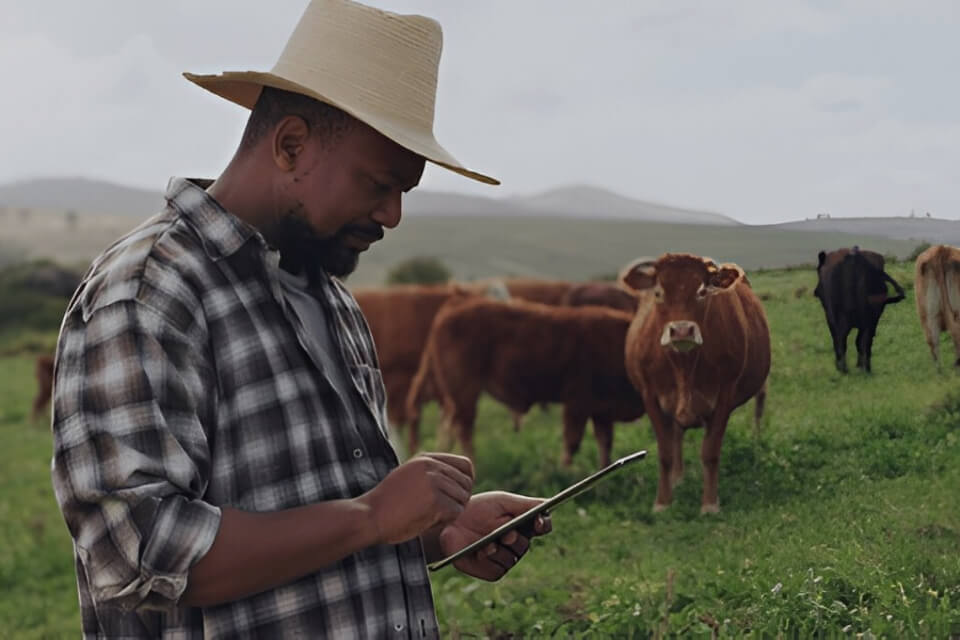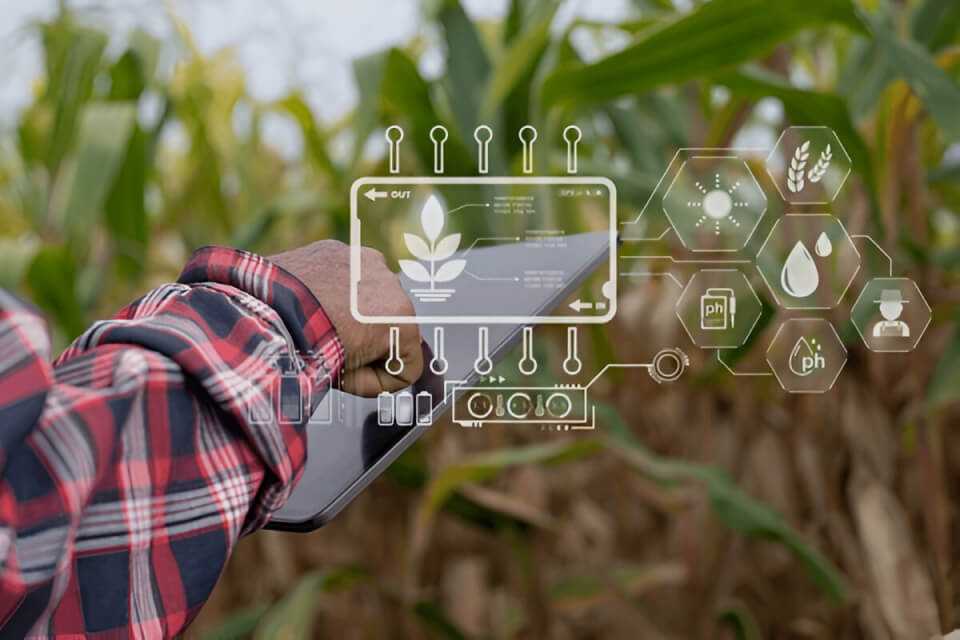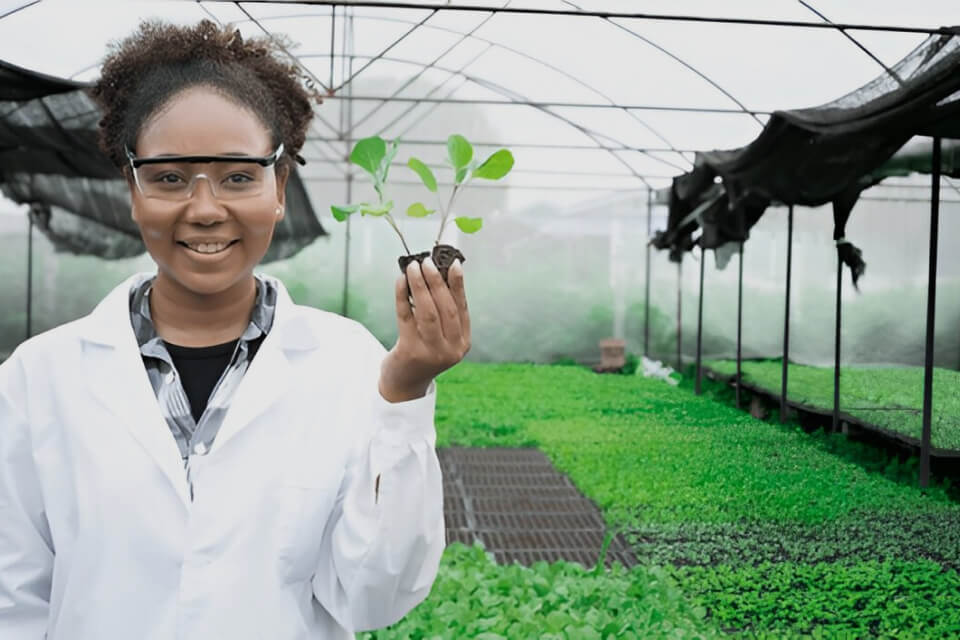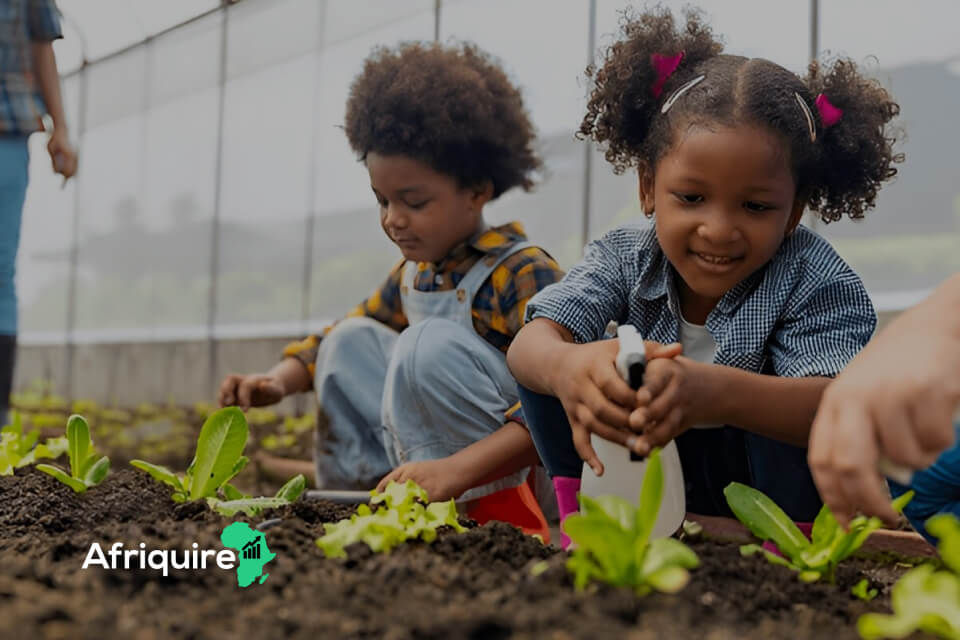- Introduction
- Introduction: Importance of Agripreneurship in Africa's Economic Development
- Emerging Trends and Innovations in Agripreneurship
- The Role of Technology in Shaping the Future of Agripreneurship
- Policy and Government Support for Agripreneurs
- The Growing Importance of Sustainable Practices
- Predictions for the Next Decade in African Agripreneurship
- Frequently Asked Questions (FAQs)
- Conclusion
Introduction
Agripreneurship, the business side of farming and food production, is gaining momentum in Africa, particularly among the youth. This trend bodes well for the future of agriculture, as it opens up opportunities for agricultural innovations. With their tech-savvy nature, young agripreneurs can use social media platforms to expand their market reach, thereby making the future of agripreneurship in Africa prosperous.
The future of agripreneurship in Africa is very bright. It goes far beyond just farming, and into the farming sector that also involves business. Agripreneurship means more job opportunities and a better economy. Youths can easily adopt agriculture, with the help of technology, leading to more economic development. Please keep reading to see what the future holds for agriculture and its business side.
Introduction: Importance of Agripreneurship in Africa’s Economic Development
Agripreneurship is the combination of agriculture, entrepreneurship, and business. This implies managing a farm or agricultural business intelligently and profitably. In Africa, so many people depend on farming, making agripreneurship very key to creating more jobs, enhancing food supply, and boosting economies.
Current State of Agripreneurship in Africa
Agripreneurship in Africa has gone so far, but there is still work to be done. A good number of youths have looked beyond farming for survival . They are more interested in the business side of things. They have also included the use of technology to yield maximum results from agriculture.
From mobile apps to connecting to clients to modern farming methods, they have revolutionized agripreneurship. Some farmers are now using apps to connect them with buyers, eliminating middlemen, which means that they earn more and don’t have to pay commissions. The use of drones have also been introduced to check on farms, check that crops are healthy and ready for harvest. Weather forecasts have also helped in farming, helping the farmer to prepare ahead of weather conditions.
However, there are many problems that farmers face. One of them is lack of access to loans from banks to get farming tools, and increase productivity. Lack of infrastructures, like bad roads, poor electricity, inaccessibility to farming tools, and lack of warehouse space to keep farm produce, have also made supply very difficult. However the current state of agripreneurship in Africa is not doing too bad. The future looks good because more and more organizations, government and youth are contributing to agripreneurship.
Challenges and opportunities in African agripreneurship
Challenges
African agripreneurship is faced with several challenges that have delayed its progress. These challenges include:
- Inadequate Capital/ Funding: While agritech is one of the most funded sectors in Africa, agripreneurs are still faced with challenges regarding raising capital and adequate funding. This lack of funds have prevented farmers from purchasing land, tools, seeds, and other important resources that they need.
- Poor Infrastructure: Bad roads and erratic electricity make transportation of farm produce to the market quite challenging. This causes spoilage of food and a loss in income.
- Market Fluctuations: Prices of farm products change very quickly, making farming very risky for many agri-entrepreneurs.
Opportunities
- Growing Food Demand: Africa is expressing a rise in its population, which in turn, means that they are more consumers of food. Farmers can use the opportunity to produce more crops and engage in more animal farming to provide people’s needs.
- Global Interest in Sustainable Farming: There has been more attention to sustainable farming all over the world. Farmers in Africa can also engage in green farming so as able to supply not just local demands but also international markets.
- Support from Government and NGOs: Governments and organizations are starting to see the need for encouraging agripreneurship in Africa. This has led to them implementing programs that offer training, loans, farming resources and business advice to agripreneurs.
Emerging Trends and Innovations in Agripreneurship
Value Addition and Processing
Farming has gone beyond cultivation- digging up a hole, planting a seed, caring for it till it’s ripe for harvest. It has also included value addition. Value addition is a recent trend in farming which involves processing farm products into finished or semi-finished products to sell at a higher price. This involves harvesting farm products, transforming them into consumer needs, then marketing those finished products. For example, instead of selling fresh tomatoes, farmers can have it processed into tomato paste.
The result of this is that the hassle of preserving fresh tomatoes is reduced, leading to less waste and more profit. Another example is cassava, which can be processed into flour, garri or chips, making it more marketable than the raw product.
Value addition also helps by increasing employment opportunities since both the farm and processing factories would require employees to plant, harvest, package, market and distribute these commodities. Some governments and NGOs are helping farmers by training them and providing funds to build small processing factories. This would help farmers grow their businesses and reduce food waste.
Organic and Specialty Farming
Another emerging trend is in organic and specialty farming. A lot of people have started paying more attention to their diet, which has increased the demand for organic food, due to how healthy it is for both the body and environment. Organic products means that harmful chemicals are avoided, making way for the use of natural fertilizers and eco-friendly pest control methods.
Farmers are also going into specialty farming. Specialty farming has also gained spotlight. This means growing unique and rare crops to sell at high prices. An example is herbs and spices – ginger, turmeric and garlic. Herbal medicine plants, including moringa and aloe vera, are also in high demand.
By growing organic and specialized products, farmers understand what the general public needs, and are able to sell into valuable markets and increase income, while protecting the environment and general well-being at the same.
Urban and Peri-Urban Agriculture
As cities grow, so does the demand for food around them. This is where urban agriculture steps in – growing food right in the city, with methods such as:
- Vertical Farming: The vertical farming method is a way of growing crops vertically and horizontally in layers stacked on top of each other. This means growing plants in layers, often inside buildings.
- Hydroponics: This is the technique of growing plants using a water-based nutrient solution rather than soil.
Farmers in the countryside around cities, in peri-urban areas, have the best opportunities because they can provide fresh food more quickly. Urban farming also reduces the costs of transport and keeps the food fresher.
In cities, community gardens bring people together. A family can grow vegetables and learn about farming while creating green spaces. This helps reduce hunger and promotes healthy eating.

The Role of Technology in Shaping the Future of Agripreneurship
Technology is making agripreneurship better for farmers in Africa by helping them work smarter, grow more food, and increase their money. Let’s see how technology is shaping farming through precision agriculture, mobile payments for agricultural financing, and e-commerce and online platforms.
Precision Agriculture and Digital Farming
Precision agriculture involves introducing technology to farming to make it more efficient. Farmers now use gadgets like GPS, drones and soil sensors in monitoring their farms and their products and also making informed decisions.
Now, How Does It Work?
First, we have drones that farmers use to get an aerial view of their crops. The drones take pictures showing areas that could be having unhealthy crops and showing areas that the farmers might otherwise not be able to see. This helps the Farmers to detect possible problems early and find ways of working against them.
Soil sensors are also an example of technology used by farmers. These tools help to measure the moisture of the soil so that farmers can know the appropriate farming method to use to get the best out of their land. If the soil is too dry, farmers would immediately go into irrigation. This would help to reduce water wastage and ensure that they produce healthy plants.
Another benefit of technology is that farmers have access to information that is helpful. For example, they can easily check the weather forecast, market prices and even learn the best farming practices online. Technology has upgraded the way agriculture works, helping farmers to plan ahead and reduce loss.
Agricultural Finance and Mobile Payments
Every business costs money, and agriculture is not left out of it. Farming involves a lot of processes that need money to be properly implemented. Farmers must purchase land, seeds, fertilizers, farming tools, pay other employees, amongst other things. Despite this large expenditure, Farmers are not exactly on the radar of any banking system.
However, mobile money is starting to bridge this gap. The development of mobile banking apps have exposed farmers to being able to have financial transactions. With the Invention of apps like Flutterwave and M-Pesa, farmers are able to send and receive cash on their mobile phones. They can now also apply for microfinance loans directly from their phones, even without owning a bank account. Some companies are focused on the agricultural industry, so they are open to special loans for farmers which are repayable after harvest.
The fintech industry has largely benefited the agripreneurship sector. Mobile payments have lessened the risks in farming because the farmers are able to get the cash that they need in record time.
E-commerce and online marketplaces
E-commerce refers to the sale of products online. Now, technology has made it possible for farmers to sell their crops directly to customers through online platforms.
Some platforms, like Jumia Food and Farmcrowdy, allow farmers to advertise their produce online. Customers place orders for fruits, vegetables, or grains directly with the farmers. Farmers receive their money faster, with no middlemen, therefore, they make more money.
The online marketplaces also help farmers with the management of orders and recordkeeping of the amount they sell. This reduces waste and ensures farmers can deliver fresh produce to the customer in time.
Policy and Government Support for Agripreneurs
Enabling Policies and Regulations
Government support can be seen through policies and regulations. Government can make policies, rules and plans that allow agripreneurs to work with little to know stress. For example,
- Starting a Business: The government can make the business registration, paperwork and the speed of processing easy to start a business.
- Access to Land: land is one of the most important resources that anyone in agriculture needs. The government can create policies that make access to land easy and affordable. The government can also lease out land to farmers at an affordable rate with conducive conditions.
- Reasonable Prices: Farm product prices move based on economic movement. The government can stabilize prices so as to ensure that Farmers get reasonable returns, while consumers do not spend as much.
With such rules in place, agripreneurs can focus on growing their businesses without too many problems.
Access to Finance and Credit Facilities
Going into farming can be expensive. You will need to get land, seeds, tools, employees, and other supplies, but getting bank loans can be difficult. Here’s how the government can intervene:
- Special loans can be given to farmers at low interest rates. This way farmers can produce more, without having to worry about returning a large amount of money, while they still get good profits.
- Microfinance banks are also helpful, because they give small loans to people who can get access to loans from regular banks. Their interest rates are also quite affordable.
- Grant and Subsidies: The government can provide free money in the form of grants or subsidized rates to entrepreneurs to cut their costs.
Farmers should also be educated on these opportunities so that they can apply and get the assistance they need.
Capacity Building and Training Programs
Agri business is not an easy task. Having the resources to start a business is just as important as knowing how to run the business. It is very important to not just have resources but also know how to farm and run a farming business. The government can organize training programs to teach agri-business owners important skills, such as:
- Modern Farming Techniques: New ways to grow crops or raise animals to realise better results can be taught
- Business Skills: Agri-business can learn how to manage money, sell a product, and grow a business.
- Technology Use: They can be taught how to use apps and other digital tools to check forecasts, monitor crops, and/or find buyers online.
Workshops, seminars, and mentoring programs may also be beneficial. This is where experienced farmers may teach new farmers specific practices and recommendations to help them better their livelihood.

The Growing Importance of Sustainable Practices
Farming is how we grow food, but if the wrong method is used, more harm than good will be done to the environment. Farmers are, therefore, starting to adopt sustainable farming practices, helping to produce food without affecting the environment negatively.
Climate-Smart Agriculture
Climate-smart agriculture (CSA) is an approach to transforming agri-food systems to be more climate-resilient and green. Simply put, it refers to farming in a way that is resilient to weather changes and at the same time contributes to reducing pollution.
The focus of climate-smart agriculture will be on:
- Growing more food
- Helping crops survive extreme weather
- Reducing harmful gas emissions
With CSA, farmers can engage in intercropping, which means planting different crops together to keep the soil healthy and control pests naturally. They can also use crops that require little water. For example, if a farmer plants maize and beans together, the maize will give shade, while the beans add nutrients to the soil. This would make the farm more productive and less likely to suffer during unfavourable weather conditions.
Soil Conservation and Management
Soil conservation is the process of maintaining the soil’s health to continue producing crops. This would help to reduce erosion, maintain soil fertility, and guard the soil ecology. Once the soil is damaged, crops will not grow well.
Poor farming practices like overuse of chemicals and deforestation can weaken the soil. As a farmer, attention should not only be under the crops you are growing but also on the land that you are using.
How to Protect the Soil:
- Minimal Tillage: Ploughing the soil less to keep it from breaking apart.
- Cover Cropping: Plants grow on the land during the wet seasons of a year to prevent soil erosion.
- Use of Natural Fertilizers: Compost or animal droppings are added to make the land more fertile.
A farmer can grow cover crops in the dry season, e.g legumes. These prevent wind and rain from washing away the soil while improving its fertility.
Biodiversity and Ecosystem Services
Biodiversity refers to having different types of plants, insects and animals living together. Farms that practice biodiversity are usually healthier because animals and plants have their growth in an interwoven and co-dependent way.
For example, let’s look at:
- Pollination: Bees and butterflies help plants to grow fruit and seed.
- Pest Control: Birds and insects eat harmful bugs.
- Nutrient Cycling: Different plants help the soil stay rich with nutrients
How to Protect Biodiversity:
- Plant various crops rather than a single type of plant.
- Preserve natural habitats such as bushes and trees around the farm.
Predictions for the Next Decade in African Agripreneurship
Some changes in Africa’s farming industry over the next 10 years will be exciting. Farmers will make much more use of technology. People will want healthier food. It will be much easier for farmers to sell their goods and get loans. Let’s have a closer look at these changes.
Increased Adoption of Technology and Innovation
In the future, as technology innovations increase, so will the use of technology in African farming to grow better crops. Mobile apps, drones and machines are part of the technology tools that will help farmers to farm smarter.
- Precision farming: Farmers, with the use of sensors and drones, will know what their crops and land, be it water or fertilizer. This will help to avoid wasting resources and to get better farm produce.
- Mobile Apps: Weather, crop prices, best farming methods, etc., will be checked by the farmers using mobile apps to make better decisions and avoid losses.
With increased internet access in villages, more and more farmers will make use of these tech tools that make farming easier and productive.
Growing Demand for Sustainable and Organic Produce
Presently, a lot of people are starting to see the need of consuming healthy food grown without toxic chemicals. In the next decade, this trend would have grown to a point where farmers would have totally switched to organic farming. Consumers would demand for healthier foods that are not only safe for them, but also for the environment.
Organic farming would require the use of natural methods to grow crops making them safer for consumption.
Another concern would be saving the environment. Organic farming would help protect the soil, water and animals. This means less pollution and a cleaner environment
For farmers who adopt organic farming now, the future is more promising for them. They would be able to find a market, not just in Africa but around the world to help them earn more money while protecting nature.
Expanded Access to Markets and Finance for Agripreneurs
Selling farm products and getting loans has always been hard for many African farmers, but things are changing fast. In the next ten years, predictions for access to markets and finance for agripreneurs are as follows:
- Online Markets: Through this, farmers can sell their crops directly to buyers via an online platform. This means reaching out to more clients without relying on middlemen.
- Mobile Banking: Through the services of online payment platforms, farmers are going to borrow money easily, pay for supplies, and save profits. The special loan services will help farmers in purchasing seeds, equipment, and fertilizers.
These financial tools will make farming less risky and more rewarding for agripreneurs.

Frequently Asked Questions (FAQs)
1. What is agripreneurship?
Agripreneurship is when business begins to be infused with agriculture. This includes growing crops, raising animals, making products from farm produce and marketing farm products. It’s about using farming to make money and create jobs.
2. What are the challenges faced by agripreneurs in Africa?
Some challenges include lack of access to finance, poor infrastructure, climate change effects, and limited market access. These issues can make it hard for agripreneurs to succeed.
3. How can technology help agripreneurs?
Technology can improve farming methods through drone and sensors, irrigation systems, and pest control. Mobile apps can also help farmers connect with buyers and get information on weather and prices.
4. What skills do aspiring agripreneurs need?
Aspiring agripreneurs should learn about business management, marketing, sustainable farming practices, and how to use technology effectively in agriculture.
5. What does the future hold for agripreneurship in Africa?
The future looks promising as more young people are getting involved in agriculture with innovative ideas and technologies. As they tackle challenges creatively, they will likely transform the agricultural landscape across the continent.
Conclusion
The future of agripreneurship in Africa shines bright like a new dawn! Africa’s vast resources and youthful population are ripe for innovation, giving it immense potential. In addition to improving their own lives, young entrepreneurs can also make a significant contribution to their communities when they embrace technology and sustainable practices.
The saying “Where there’s a will, there’s a way” perfectly captures the spirit of African youth stepping into agriculture with determination and creativity. They will certainly pave the way for a prosperous agricultural future on the continent if they keep pushing forward despite challenges like climate change or market access issues.



